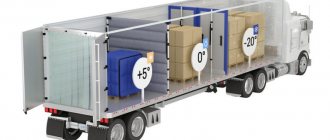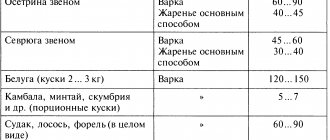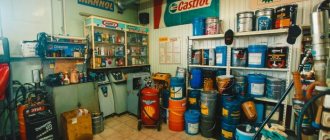15.03.2021
Diesel fuel is a product obtained from kerosene-gas oil fractions as a result of direct distillation of oil. Diesel differs from gasoline in its boiling point - diesel fuel boils at higher temperatures. This is why diesel fuel has a much lower tendency to evaporate and burns much more slowly. Explosive combustion or detonation is unlikely with diesel fuel. Diesel shows greater efficiency and economic benefits when used in engines of large equipment. Most often, diesel locomotives, trucks, buses, construction and military equipment, boats and other water transport travel on diesel engines.
Diesel fuel differs according to the following characteristics:
- Viscosity
_ For fast moving vehicles, low-viscosity diesel fuel is used, for low-speed vehicles (tractors, large ships), as well as units for stationary use, for example, boiler houses, high-viscosity diesel fuel is used. - Seasonality
. Summer diesel (L) has a density of no more than 860 kg/m³, ignition t 62 ⁰С, freezing point -5 ⁰С, winter (W) - density no more than 840 kg/m³, ignition t 40 ⁰С, freezing temperature -35 ⁰С, arctic diesel (A) – density no more than 830 kg/m³, flash point 35 ⁰С, freezing point -55 ⁰С.
Requirements and shelf life of diesel fuel
The shelf life of diesel fuel does not exceed 1 year, with the exception of diesel produced for the needs of the military-industrial complex; it can have a shelf life of up to 5 years. Moreover, storage conditions significantly affect the preservation of the original properties of the product. The following factors degrade the quality of fuel and, as a result, reduce its shelf life:
- Presence of copper or zinc
. These elements trigger the process of decay of diesel fuel. - Presence of additives in diesel engines
. DT class Euro 4 and Euro 5 contains additives that compensate for low sulfur levels and increase lubricity. The additive decomposes quickly, follow the manufacturer's recommendations. - Temperature increase
. High temperatures accelerate the decomposition of diesel fuel. - Presence of contamination
- ingress of dust, dirt from the outside or from the internal walls of the container.
Winter and arctic diesel fuel has a shorter shelf life than summer diesel fuel. As the temperature decreases, the viscosity of the product increases, and therefore diesel tanks are equipped with a stationary or portable heating system.
Requirements for diesel containers
The above-listed features of fuel indicate that storing diesel fuel (DF) is associated with less danger than storing its closest competitor, gasoline. For example, a diesel tank does not need a floating roof or pontoon. At the same time, diesel is a flammable liquid and, of course, its storage poses a threat and requires compliance with fire safety measures. The concentration of diesel fuel vapors with air within 2-3% of the total volume is explosive. Diesel has low toxicity and belongs to hazard class 4 substances. The storage process of diesel fuel is regulated by GOST 1510-84.
According to the requirements for the storage of diesel fuel, it can be stored in low-pressure metal horizontal tanks, vertical tanks without a pontoon (gas piping), frameless rubber-fabric and polymer tanks. Tanks made from innovative materials are manufactured in accordance with the requirements for diesel tanks and undergo appropriate testing and certification.
Basic requirements for diesel fuel storage:
- The internal coating of the diesel fuel tank must be anti-corrosion, resistant to petroleum products, produced water, and hot water.
- The outer layer must be protected from corrosion.
- The sealing of equipment and draining and filling devices must be ensured.
- The container is protected from dirt and dust.
- The use of a non-sparking tool is specified.
- Containers must be protected from static electricity.
Fire extinguishing agents in case of a diesel fire are sprayed water, foam, carbon dioxide, reinforced reinforced concrete, superheated steam, compositions 3 and 5. The supply of these substances should be located in close proximity to the diesel fuel storage location.
The diesel fuel storage tank can be placed inside cool, dark rooms without direct sunlight, with holes for smoke to escape, or in open areas. The site must be surrounded by a fence - a shaft, a wall with a height of 0.5 m with a ramp for access to fuel, and have good lighting in the dark. Fire safety regulations require gaps between storage sections.
Is it possible to store gasoline in plastic containers?
It is possible, but it is very dangerous. The culprit is static electricity. When gasoline moves and comes into contact with a dielectric (in this case, a plastic canister), electricity is generated. It can create a small spark, which will be enough for a catastrophe to occur. It is for this reason that gas stations refuse to fill fuel in plastic containers. Today, special canisters are produced from a special plastic that does not accumulate static electricity. But whether we should believe this is a rather controversial question. Especially if this manufacturer is a little-known company from China.
Bottom line
Gasoline is a mixture of light hydrocarbons. Today, many two-stroke and four-stroke internal combustion engines use this fuel. And these are not only cars, but also garden equipment (lawn mowers, chainsaws, trimmers, walk-behind tractors). We found out that gasoline has a certain shelf life, after which it loses its initial characteristics (including octane number). With proper fuel storage, your equipment will operate properly throughout its entire service life.
Features of choosing a container for storing diesel fuel
If we talk about materials for the production of tanks for petroleum products, you can buy tanks for diesel fuel made of metal, plastic, and polymer. Read more about the pros and cons of materials:
- Metal tanks for diesel fuel
- can be horizontal (for a smaller volume) and vertical (for a larger volume). The former, as a rule, are supplied ready-made from production, the latter are assembled at the site of operation. The weld seam is the most vulnerable point of this design. The metal is susceptible to corrosion; steel tanks for diesel fuel must be cleaned at least once every 2 years. Since produced water is formed in them, it is necessary to monitor its level and, if it exceeds it, remove it. The products have significant weight. It takes several months to build a vertical steel tank for diesel fuel.
- Reinforced concrete tanks
are capital construction projects, which extends the construction of warehouses based on them for several years. Design, construction, and commissioning are associated with significant financial and time costs.
- Plastic containers
are used for storing small volumes of diesel. They are quite fragile and sensitive to low temperatures, but they are light in weight and low in cost. They are usually used in private households.
- Soft polymer containers for storing diesel fuel
are hermetically sealed shells made of ballistic fabric with a polymer layer. Suitable for storing any volume of diesel fuel. The minimum volume of a polymer container for fuel is 1000 l (1 m3), the maximum is 500 m3. If a larger volume warehouse is needed, then a set of containers is used.
Technical characteristics of containers
Containers for fuels and lubricants are usually divided by volume:
- Compact (tanks, barrels) up to 5 m3
- Medium tanks up to 16 m3
- Large tanks over 16 m3
The volume of standard containers for fuels and lubricants can be 2.5 m3, 5 m3, 10 m3, 15 m3, 25 m3, 30 m3, 40 m3, 50 m3, 60 m3.
Tanks with a volume exceeding 100 m3 are practically not used. This is due to the fact that it is much more practical and safer to use containers of smaller capacity. Such a solution can significantly simplify design, production, delivery to site, installation, maintenance and repair.
The shape of containers for oils, fuel and other materials is cylindrical, and stainless or carbon steel is used for their manufacture. The end part can be rounded, conical or flat. This design is easy to manufacture, reduces material consumption, and also reduces the likelihood of container rupture when pressure increases. When bending the sheet, the total length of the welds, which are the weak point of any container for storing and transporting fuels and lubricants, also decreases.
Depending on their location, there are vertical and horizontal containers. The only advantage of the first is the saving of space under the container. But in a horizontal arrangement, you can more correctly position the drain valve and other equipment. In addition, horizontal tanks are dug in to a shallow depth, and the pressure at the bottom, which depends only on the height of the tank, is not subject to strong changes.
Tanks made of carbon steel will require additional anti-corrosion protection. For these purposes, enamel or epoxy coatings are used, both outside and inside.
Metal containers for fuels and lubricants can be single- and multi-sectional, with a different number of drain holes and necks.
Double-walled steel containers are best protected from possible leaks. Unlike single-walled ones, here the space between the walls is filled with inert gas. They can also additionally accommodate sensors.
Advantages of polymer tanks
The applicability of soft oil tanks produced is comparable to the use of metal analogues, while there is no corrosion, the process of formation of produced water, the useful volume is 100% of the nominal (for a steel analogue - 85%).
Advantages of buying polymer diesel fuel containers:
- The absence of a frame, the ability to fold, and low weight (a fuel tank of 5000 liters weighs 32 kg) simplify and reduce the cost of transportation and installation.
- Minimum period for warehouse arrangement.
- Possibility of use in environmental areas.
- Produced water is not formed, there are no losses due to evaporation.
- There is no need for a foundation; no soil reclamation is required after dismantling.
- Wide operating temperature range – from -60 ⁰С to +85 ⁰С.
The delivery set includes everything necessary for assembly and start-up. With the help of additional equipment, the diesel tank is adapted to the particular use: you can add heating, a distribution and control system with remote control, level sensors and other elements for safety and ease of use.
Additional requirements for storage in containers
Tanks must be equipped with drain and receiving fittings, a hatch, a metal filter mesh at the receiving end, a device for measuring the liquid level and grounding to remove static electricity
Containers for storing fuel and lubricants must be painted in appropriate colors
All lids on containers must be secured to the necks.
All storage containers must be labeled with the name of the storage product and the “Flammable” sign.
The requirement for the presence of a bund is exactly the same as for fuel and lubricants stored in containers.
Buy fuel tanks with delivery and technical support
You can buy containers for storing diesel fuel in the configuration you need. The final price for fuel tanks depends on the set of additional equipment. A stock of ready-made containers of popular sizes is always in stock - we will ship on the day of order. Due to the light weight and flexibility of tank equipment, delivery will be inexpensive to any point in Russia and the CIS countries. Orders can be delivered to hard-to-reach areas by helicopter.
We provide advisory and technical support 24 hours a day, 7 days a week, at all stages of purchase and use. There are Neftetank brigades in 10 regions of Russia. You can order us to install tanks or use the installation supervision service, as well as one of the service support options. The product is delivered in a wooden container, with a full set of documentation.
Archive of articles
Consequences of improper storage of gasoline
What happens to fuel fluid if it is not stored properly for a long time? The fact is that the main property of any fuel is to release energy during combustion. As a result of long-term storage, this property is lost. What exactly happens to the fuel and what causes its quality to deteriorate?
Over time, the octane number, on which the combustible properties of the fuel depends, decreases, and the amount of resins increases significantly. This happens due to the contact of hydrocarbons contained in the fuel with oxygen. Resins create viscous compounds of brown color. When using such fuel, these compounds cover the surface of the parts in contact with them - the carburetor, valves, walls of the fuel tank, etc. As a result, the well-functioning system of interaction between car parts and the fuel system is disrupted.











